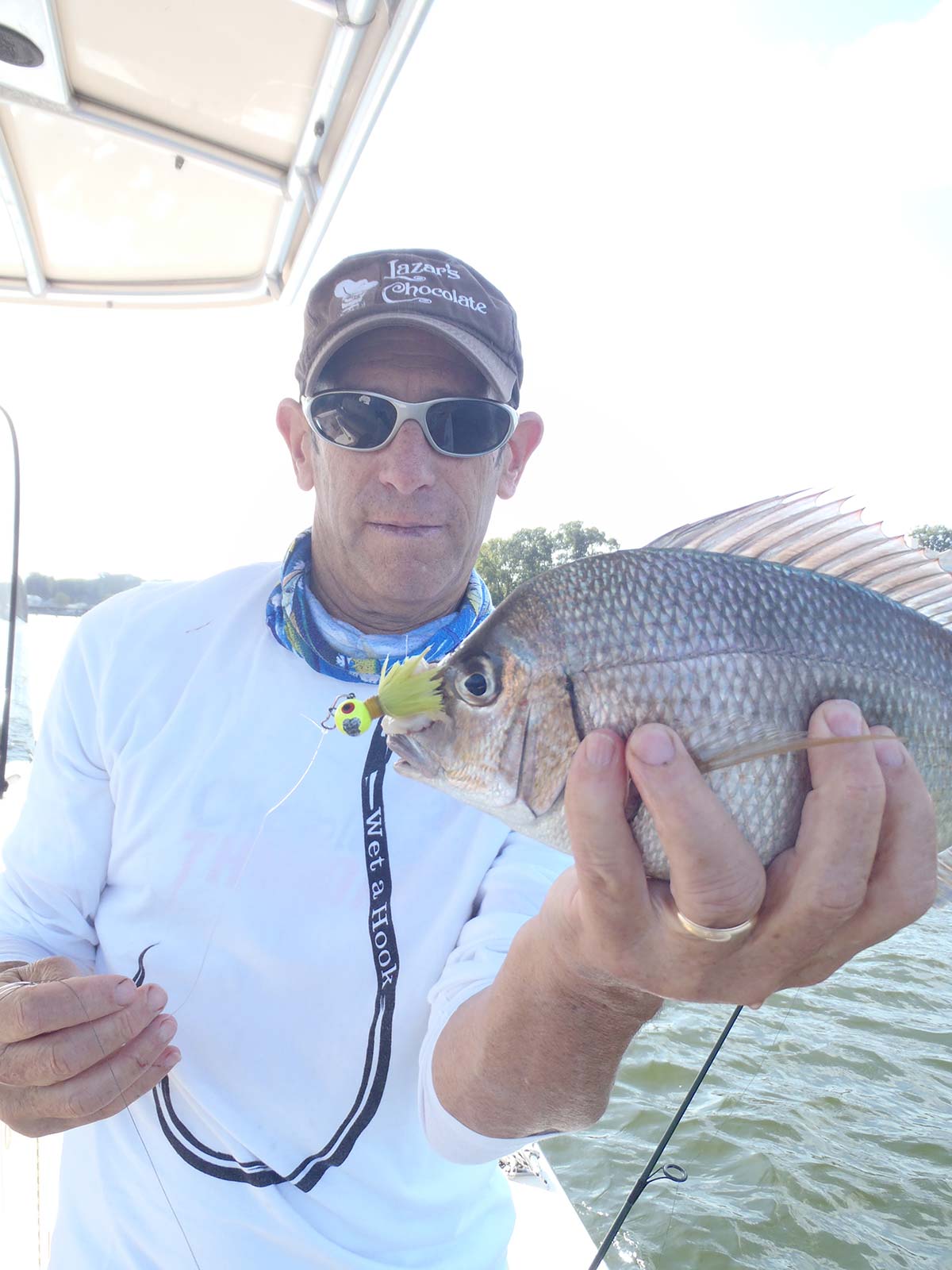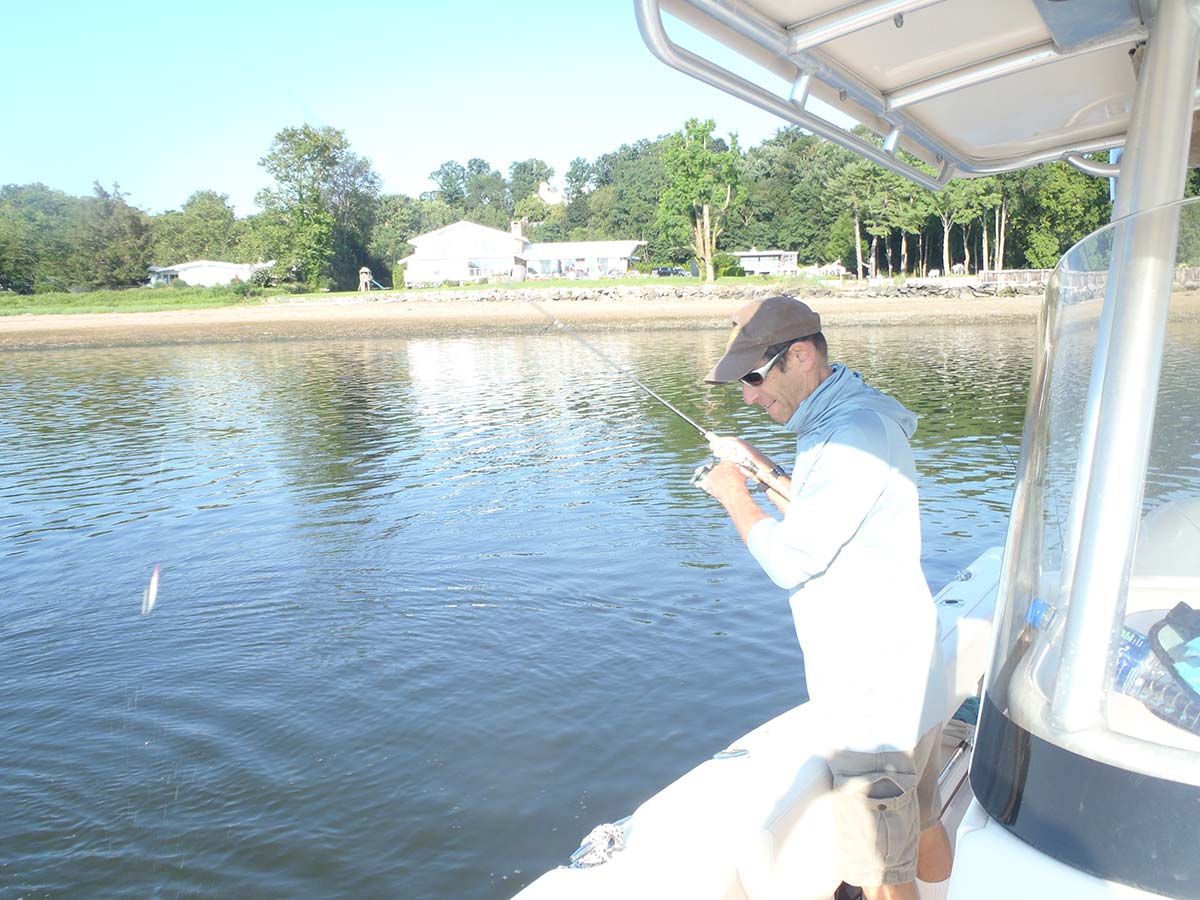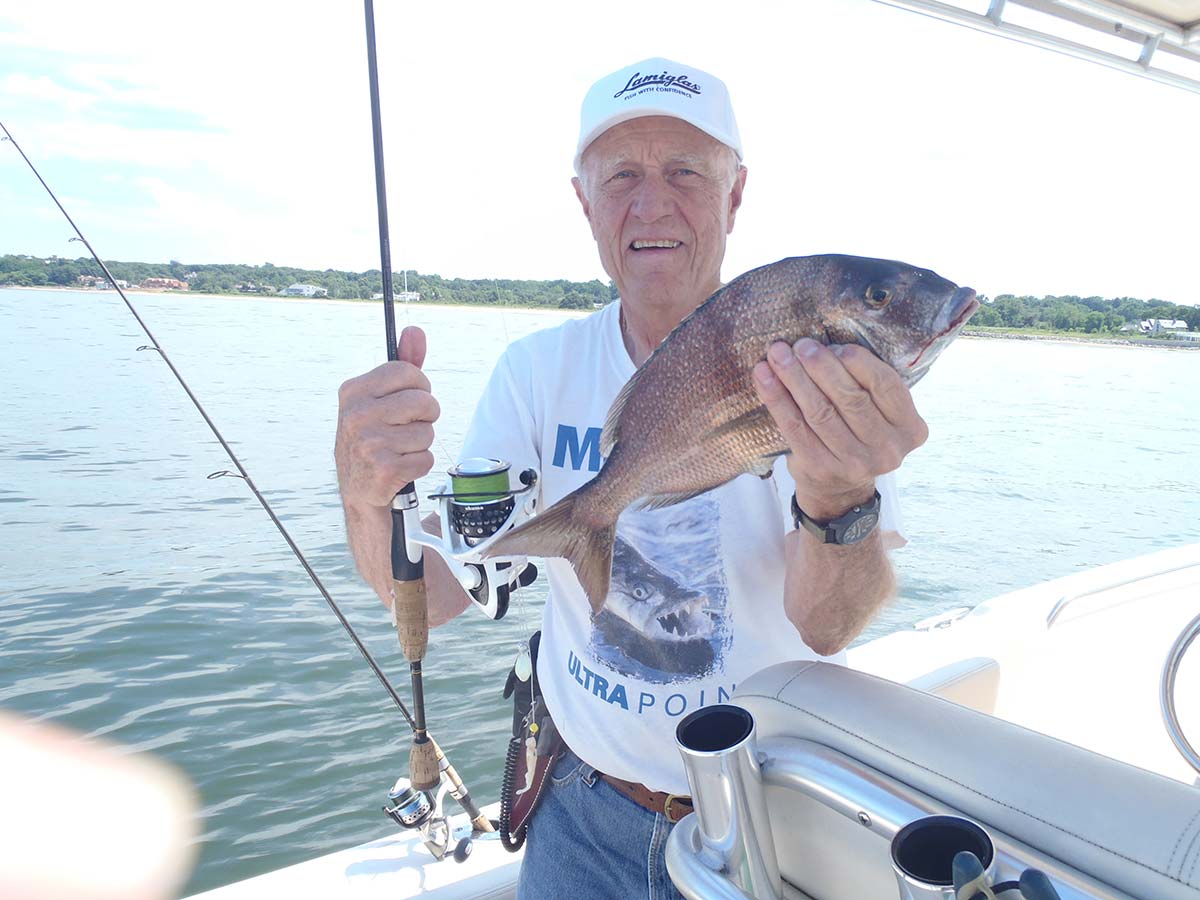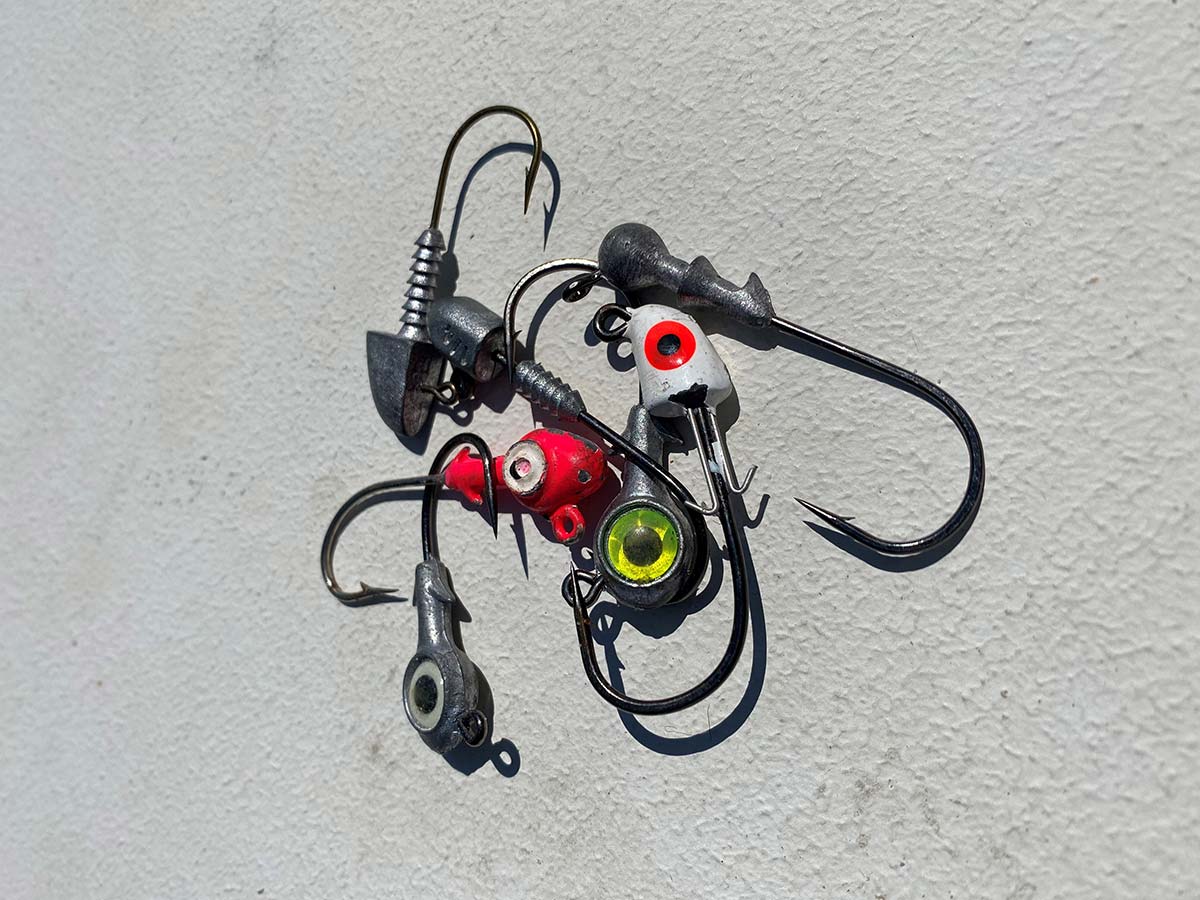
Go shallow and light for scup.
The standard way of porgy fishing was taught to me by my father and my best friend’s father in Peconic Bay. It was, therefore, my reality for decades. The essence of it included, fish deep, fish with hi-lo rigs, bait hooks with squid strips, and drift a few chosen spots on the west side of Robin’s Island. So, in my kid’s mind, this was where the porgies lived, and it never crossed my mind that they might be on the east side of Robin’s Island too, as well as other spots along the east coast. Such is the reality of a child that has been framed by repetitive fishing trips to the same spot.
That’s how I fished for porgies into my young adult life, too. Heck, there were plenty of porgies, we caught pretty much as many as we wanted, and they were big. So why indulge a sense of creativity and look for them in other spots and try other ways to catch them? But, time marches on, new products enter the market, communication between anglers increases, and so does technology. They say that “necessity is the mother of invention,” but sometimes in this big strange world, invention comes first; perhaps for some other application. Then, folks using the invention as intended realize that the technology and equipment might work for other applications, too. In my youth, no one would dream of using a jig head with a tiny hook and an ultra-light outfit to fish for porgies, but we do today. Of course, to use this tackle we must fish shallow.
How Shallow Do They Go?
I was in my 40s the first time anyone suggested to me that they caught porgies in only a few feet of water. In spite of the fact that shallow fishing for porgies was beyond my reality, I didn’t argue. I was polite and perhaps offered a simple phrase such as “gee, I didn’t know that,” and all the while dismissing it out of hand. The late John Richy who owned and operated Terminal Tackle in Kings Park for decades, was a very interesting guy to talk to about fishing. He actually was ahead of his time in some of his approaches, and very innovative. One of the things he kept telling me over and over was to fish shallow for porgies, and that I should try fishing for them at night. One of John’s favorite ways to fish was worm trolling shorelines at night for stripers—a practice that’s probably too expensive to do on a regular basis today, given the sizes and price of sandworms. He would offer as proof of his shallow porgy theory that on some nights they couldn’t keep the big porgies off the worms meant for stripers. I remember him saying, “those are monster porgies, twice the size of the fish most folks catch in deeper water.”
With my open-minded attitude I, of course, never took his advice until I was in my 70s. When I think about all the fun I missed, and might have had with big porgies using freshwater gear in the shallows, I am overcome with a deep sense of regret. I must confess that even in my 70s I wasn’t the one who explored the shallows for the dogged-fighting silver pork chops. It was Rich Lazar who took the first plunge.
As I recall it now, but must admit, the details might have gone a little sour over the last five years, but it was a summer heat wave that drove Rich to it. Day after day of searing heat and high humidity kept him off the water. How does that saying go? Oh yes, “only mad dogs and Englishmen go out in the noon-day sun.” Well anyway, since he’s not fond of heat stroke, he thought that by casting from the shaded porch at his marina, and casting into just a few feet of water, that he might catch something. I don’t believe he was targeting porgies, rather hoping for a nibble or two, however his out-of-the-box approach was rewarded with a mess of porgies, and big ones too. Typically, when we fish in a boat for porgies—most fish will be between 10 and 13 inches, and they’re a lot of fun to catch. But when Rich called me that night, he was giddy because the fish were all bigger than 12 inches and he caught some 14-inch fish as well as one 15-inch porgy. “What’s going on here?” I thought, “This can’t be right. How can fish caught in a foot or two of water be a bigger average size than those on the deeper porgy grounds?” Well, after several years of thought and analysis, I only have a foggy idea why the big ones huddle up in such shallow spots, but the new reality is that they do. Perhaps, a trip down memory lane will allow me to understand this shallow stuff better. But first, a little recent history.

The Tube
Perhaps the most striking example of large shallow water porgies developed last summer. Rich and I worked the usually porgy grounds and we caught them . By the way, in spite of the fact that porgies are often shallow, it’s still fun to pick them from a boat, be able to move easily from spot to spot, fish them straight up and down, chum, and have lots of gear handy in the boat. So, this article isn’t about convincing everyone to abandon their boats, or only make casts from boats in inches of water—not at all, but it certainly is a fun change of pace.
Back to the tube. There’s a spot in the harbor that he calls the “tube” for reasons that I don’t comprehend because there is no tube. However, after several hours of porgy catching in the usual spots he says, “Hey, we’ve got an hour or so of tide, let’s go to the tube and see if the fish are shallow.” We anchored in about 10 feet of water and began making short casts into maybe 6 feet of water with an eighth-ounce jig tipped with clam. We had a nibble or two, but we caught nothing. Then, Rich made a long cast that almost landed on shore and began a very, very slow jiggle and pause retrieve. Almost immediately he set the hook on a porgy and brought it to boat. It was bigger than any we’d caught that day—that was the trick—cast into inches of water to catch big porgies during what was left of the flood tide with freshwater ultralight tackle, and it was an absolute blast.
New Reality
It only took four or five decades to make me see the light. That’s not so bad, is it? So, my new reality is that porgies can be caught shallow or deep, and that sometimes the shallow fish are larger than the deeper fish. That’s an adjustment.
There are some advantages to this new reality. Whereas once I canceled a trip due to weather, now I know all is not lost; unless we’re talking about lightning or a hurricane. Most bays and harbors have nooks and crannies where a small boat can get out of the wind by sneaking up against the shore or reed line at the higher stages of the tide. I concluded that the fish moved gradually in on the flood and then out on the ebb. Therefore, a logical thought would be to move off the shore as the tide dropped to stay with the fish, but this didn’t work.

Memory Lane
Then I had an epiphany while recounting white perch fishing from my youth. You see, my friend and I always caught half to 1-1/4-pound white perch in the creeks around Peconic Bay. It was a ton of fun on ultralight gear. One summer, a stationary front undulated over Long Island and simply would not move. Every day there were rain squalls and gusty winds out of the east and northeast that kept us in the house playing chess and pinochle. We did not own foul weather gear and we couldn’t figure a way to fish. Besides, we thought, the fish were probably hunkered down just like we were.
After four days I’d had enough. It was almost an hour after high tide and I decided to go fishing. My father had some super-sized trash bags in the basement and we cut holes for our head and arms and shimmied into them. A baseball cap wouldn’t provide much help against the rain, nor would our sneakers, but it was summer and warm, so off we went. We motored around to the back of a creek and when we arrived at one of our best perch spots the water was extremely high due to the east winds. Nonetheless, we anchored about ten feet off the marsh grass and began casting Johnson Sprites toward the reed line. We were greeted with aggressive white perch, and surprised by their size. We never used a net because we never needed to, but these fish were too big to lift aboard with the light rods and 4-pound test line. We fumbled trying to scoop them up and over the gunwale with our hands to no avail. I saw a bushel basket in the front of the boat from the last time we went crabbing, and used it to awkwardly land the fish. I had a Langley hand scale at the time and I weighed the biggest. I admit this scale wasn’t a fine-tuned digital scale and I can’t attest to its absolute accuracy, but that big one weighed over 4 pounds. It would have been a state record if we kept it and entered it, but we were kids and knew nothing about state records. We returned all of the big ones we caught to the water. They didn’t even look like the ones we regularly caught. Their backs were dark olive green, their flanks silvery gold, and the bottoms were yellow gold. They also had thick bodies and, just like their striped bass relatives, their proportions were different from their smaller siblings. After that, we caught them every time that weather pattern occurred.

Why The Frenzy?
We eventually figured out why this weather pattern worked this way. The extremely high tides allowed small baits to work deep into the weeds. As the tide ebbed, the baitfish were forced out of the reeds, and the big perch lined up near the reed line and picked them off.
Well, the bigger porgies seem to do the same thing. The porgies follow the bait to the shoreline where the bait goes to hide, but as the tide falls, the bait scatters and there is no shoreline or reeds for the porgies to use as a barrier and pin the bait, so the porgies scatter too. That’s my theory and I’m sticking to it! Regardless, if you want to try this ultralight porgy fishing with light jigheads and a little piece of clam in just a few feet of water, give it a try. I think you’ll get a big kick out of it.





